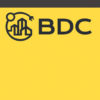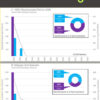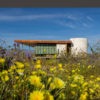
When a 7.9 earthquake struck China’s Sichuan province on May 12, 2008, the global structural engineering community mobilized, sharing information and data through formal and informal networks. Within a couple of weeks following the quake, engineers from around the world had visited the devastated area to learn firsthand about the damage incurred. Their observations are currently being disseminated through talks and articles and will eventually inform further study of the quake. This practice of visiting earthquake sites, which is decades old, offers a snapshot of the foundational relationship between engineer and nature that shapes the profession’s collaborative culture.
The modern practice of structural engineering is deeply rooted in the idea of safety—making sure that buildings and infrastructure enhance lives rather than endanger them. In this regard, structural engineering can seem more akin to medicine than architecture. Both fields have groups of professionals and researchers grappling with some common life-threatening problems—the nature of heart disease, for example, or the behavior of a structural system during an earthquake. At the same time, anyone who has experienced a serious health issue is also aware of medicine’s limits—that doctors are doing their best with the currently available knowledge and technology, which often falls well short of definitive answers.
Structural engineers also practice with similar limitations, with an added twist. Unlike heart attacks, which strike daily, significant seismic events are rare, which has several implications. The infrequency of major earthquakes means that the “opportunities” to see how structural designs perform and the ground moves in real life are equally rare; therefore, each event becomes a chance for the profession to learn and advance its thinking. At the same time, the rarity of such real life tests means that the science of seismic design has been slow to evolve and remains the profession’s frontier. How engineers grapple with the inherent unknowns in some ways defines the spectrum of practice.
“From the outside, structural engineering appears deterministic, discreet, and measurable,” observes David Mar, principal of Tipping Mar + Associates of Berkeley. “But with engineering, there is always an underlying question of how comfortable you are with what you don’t know—the gap between what your analysis predicts and what will actually happen.”
That lives are at stake spurs a desire for professional consensus rooted in rigorous testing and research, which in turn fosters collaboration between practitioners and researchers, even those who may also be competitors. The prescriptive building codes used in the United States in many ways embody this consensus. They are developed by panels of experts who review and debate, often vigorously, every recommendation. In theory, they reflect the profession’s best understanding of how to prevent life-threatening building failures but not necessarily irreparable structural damage in a major earthquake.
The majority of engineers practice squarely within the realm of these prescriptive codes, using commonly accepted solutions for straightforward structures. But the comfort provided by this “safe zone” can cause collective blind spots with serious consequences. One of the most notable examples in recent times was the unexpected damage to steel moment-resistant frames in the 1994 Northridge earthquake. The poor performance of this popular structural system, and the resulting damage, caught the engineering and construction community largely by surprise.
According to Mar, the detail at the center of this episode—a full-penetration welding of beam flanges to columns—was originally developed and tested for highly redundant, skeleton-like structural systems with relatively small beams. Over time, however, the practical application of the detail evolved away from the tested systems, as engineers, by extrapolation, began using the joint in planer frame systems involving larger beams. While welding and inspection practices also shared some culpability, the poor performance of the steel systems in Northridge was a watershed event for the profession, which, having grown too comfortable with a particular solution, had extrapolated its potential use without adequate testing.
In fact, academic research had pointed to the potential risks of the extrapolated application, but the industry resisted the findings. “Researchers knew there was a problem [with the joints], but the problems kept getting explained away, blamed on bad welds in the tests,” says Joe Maffei, a principal of San Francisco’s Rutherford & Chekene. “The engineers, builders, and steel industry refused to believe the research, because it didn’t agree with our previous assumptions. Then, the Northridge earthquake came along and proved the researchers right.”
Although no steel moment frame structures collapsed during the Northridge earthquake, the unanticipated damage was a wake-up call for the profession. In the aftermath, advocates for non-prescriptive building codes have gained a greater audience as heightened awareness of the prescriptive codes’ shortcomings has generated interest in alternative code models.
According to Maffei, a regular participant in code development committees, “The building code in the United States tries to do the impossible. It tries to distill several very complex sciences—ground motion, probability, and nonlinear structural behavior—into a set of design rules that are practical for an engineer to implement within budget. So, it’s not surprising that the codes don’t always get it right. In fact, there have been many more problems in earthquakes because people put too much faith in the building code rather than not enough.”
Performance-based and capacity design are two non-prescriptive approaches that engineers favor. A performance-based code targets post-earthquake conditions—from fully operational to near collapse—depending on a range of earthquake magnitudes and probabilities. Capacity design looks at individual components comprising a structural system and evaluates how each will perform given the sequence of events during an earthquake.
“Non-prescriptive design values the expertise of the engineering community while also making the engineer look more closely at the different components of a design,” says Mark Sarkisian, director of structural engineering for Skidmore, Owings & Merrill’s San Francisco office. “Prescriptive codes tend towards the macro, while non-prescriptive addresses the macro as well as the capacity of individual components.”
While this may appear to hint at individualistic impulses, the reality is that, to engineers, all structures are unique to varying degrees, depending on the building form, soil conditions, and other factors. Non-prescriptive design approaches are simply proposing a different way of evaluating the safety of these structures. In addition, non-prescriptive design also relies on professional consensus, but in the form of peer review.
Peer review counters another human nuance of structural engineering. Like other scientific disciplines, intuition plays an important role in structural engineering. An engineer might begin with a hunch, rooted in experience and practice, of how a building will behave in an earthquake, then develop and test a solution based on this intuition. The problem is that modeling and analysis are not as absolute and objective as they may seem.
“The human tendency is to see what you’re looking for,” observes Mar. “Computer models are like a lens: each has a distortion. Depending on what you choose to look at in your analysis—for example, the upper and lower strengths of construction materials or the foundation effects—you will see different things. A peer review system brings a different set of eyes—with different bias and skepticism—to the table.”
Collectively, the engineers interviewed for this story suggested a broader shift in philosophy. Designing for life safety alone is no longer enough from a cost and downtime perspective, a view informed by Northridge, where the final tab reached into the billions despite the quake’s relatively moderate size. More fundamentally, with basic problems of preventing building failures largely solved, the frontier of engineering has shifted to seeking better solutions, framed in terms that building owners can relate to.
Maryann Phipps, principal of Estructure of El Cerrito and past-president of the Structural Engineers Association of California, explains, “Performance-based design and new technology such as BIM are changing the way we communicate and interact by improving our ability to describe options and risk in terms that clients care about: death, dollars, and downtime. By looking at the whole spectrum—the cost of better performance versus extended post-earthquake downtime, for example—we can help the client make smarter choices that consider costs over time.”
If an update of existing codes takes years, it is hard to imagine the time and process required to shift to a non-prescriptive code. The result is a hodgepodge of model codes and administrative bulletins enacted locally to address particular issues, such as the recent boom in tall buildings. In practice, however, this philosophical shift, along with new funding, has spawned an era of rich collaboration, as engineers in the field develop new approaches that are then tested by independent research. At the same time, research institutions are working together more and including more practitioners on their advisory panels.
Of course, building codes have always lagged behind research, putting engineers in the position of mediating between what the code requires, what the research indicates, and what the client will accept. What is different now is that the new emphasis on performance, post-earthquake operability, and research has widened the gap. Currently, wood-frame, multi-family housing is a subject of discussion. The research indicates that at four- and five-stories in height, as compared with three stories and fewer, different structural solutions should be considered. How to convince a developer to go beyond code becomes one question, and how to design a solution that achieves higher performance without dramatically increasing cost is the other.
But does a performance-based approach that allows engineers more latitude to reach for new solutions, while also requiring them to look more critically at those solutions, make better engineers? “If an engineer doesn’t understand what he or she is doing, a good building code isn’t going to solve that. That’s asking too much,” says Maffei. “But it is true that a good building code is extremely important in terms of helping engineers to do their job well.”
Author Yosh Asato is a communications consultant specializing in the architecture and design industry and the co-editor of LINE, the online magazine of AIA San Francisco.
Originally published 3rd quarter 2008, in arcCA 08.3, “Engineering + Architecture.”





